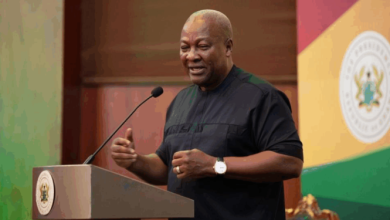Court grants Techiman South NDC candidate’s request to inspect EC’s ‘pink sheets’

The Wenchi High Court has granted leave for the inspection of the Electoral Commission’s original documents in the ongoing Techiman South parliamentary election petition.
The court says parties in the case are to meet in court on Monday, April 19, 2021, for the exercise.
This was after the court ruled that only original copies of the documents will be allowed and not the photocopied documents earlier filed by the Electoral Commission.
The court gave the Commission three days to properly file the documents for the inspection exercise to be done on the adjourned date.
Additionally, the court has awarded a cost of GHS2,000 in favour of the petitioner, Christopher Beyere due to the Electoral Commission’s failure to properly produce documents as directed by the court.
Meanwhile, the court has also ordered the Returning Officer, in the person of Nana Dwamena Frempah, to answer interrogatories filed by the petitioner.
Background
The National Democratic Congress (NDC) parliamentary candidate for Techniman South constituency, Christopher Beyere Baasongti sued the Member of Parliament for the area, Martin Adjei-Mensah Korsah, the Electoral Commission and the Clerk of Parliament.
In his suit filed at the High Court in Wenchi, he wants the declaration of Mr. Adjei-Mensah Korsah of the New Patriotic Party (NPP) as the winner of the Techniman South parliamentary elections to be quashed.
He also wants the Electoral Commission to be compelled to collate polling station results in the constituency in the presence of the representatives of the candidates.
Again, he wants the court to order the EC to declare him as winner of the elections.
In his suit, he averred that there was no collation of the results of the parliamentary election for the Techiman South constituency and no declaration of the results could be made on the 8th December 2020.
The seat has been in contention by the two leading political parties – New Patriotic Party (NPP) and NDC.
The NDC insists there was no collation of results and has rejected the EC’s announcement of the NPP candidate as the winner.










